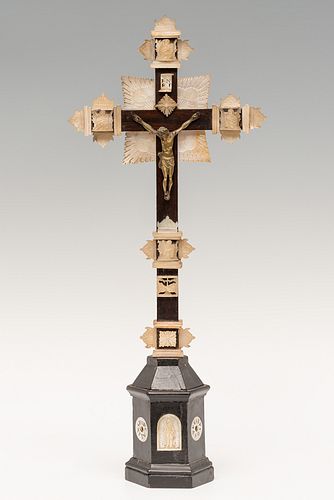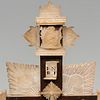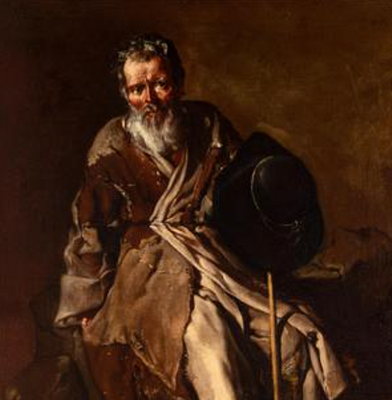Holy land cross; 19th Century. Rosewood and carved mother-of-pearl. It has a locket on the back.
Lot 1
About Seller
Setdart Auction House
Carrer Aragó 346
Barcelona
Spain
Setdart Subastas was born in 2004 and is currently the first online art auction in Spain with solidity, prestige and reliability guaranteed by our more than 60,000 users. Setdart has a young, dynamic and enterprising team ready to successfully manage the purchase and sale of art works through custom...Read more
Categories
Estimate:
EUR€500 - EUR€600
$537.63 - $645.16
Absentee vs Live bid
Two ways to bid:
- Leave a max absentee bid and the platform will bid on your behalf up to your maximum bid during the live auction.
- Bid live during the auction and your bids will be submitted real-time to the auctioneer.
Bid Increments
| Price | Bid Increment |
|---|---|
| EUR€0 | EUR€10 |
| EUR€200 | EUR€25 |
| EUR€500 | EUR€50 |
| EUR€1,000 | EUR€100 |
| EUR€3,000 | EUR€200 |
| EUR€5,000 | EUR€500 |
| EUR€10,000 | EUR€1,000 |
| EUR€20,000 | EUR€2,000 |
| EUR€50,000 | EUR€5,000 |
About Auction
By Setdart Auction House
Jun 1, 2021
Set Reminder
2021-06-01 09:45:00
2021-06-01 09:45:00
America/New_York
Bidsquare
Bidsquare : OLD MASTERS & SCULPTURE - Day 2
https://www.bidsquare.com/auctions/setdart-auction-house/old-masters-sculpture---day-2-6999
Setdart Auction House sofia@setdart.com
Setdart Auction House sofia@setdart.com
- Lot Description
Holy land cross; 19th Century. Rosewood and carved mother-of-pearl. It has a locket on the back. Measures: 48.5 x 21 x 8 cm. This reliquary cross has a main structure made of ebony that is defined by a Latin cross shape adorned with bronze elements combined with carved mother-of-pearl plaques. At the center of the reliquary is a bronze figure of Christ crucified with three nails. It is a figure of smooth and rounded volumes, which follows a classical canon, except for the proportions of the arms, which have been distorted by the author with the intention of showing the suffering of Jesus. The figure is topped with a mother-of-pearl flower-shaped applique, and in the upper area a cartouche with the inscription INRI (Iesvs Nazarenvs Rex Ivdæorvm/ Jesus of Nazareth King of the Jews). At the ends of the cross, it is possible to appreciate the presence of several carvings on mother-of-pearl, which adopt the representation of an angel, seeming to be musical angels, although it is very probable that, in spite of the lack of iconographic attributes, it is the representation of the four evangelists. This is a common and very popular characteristic in the conception of this type of work, and also of the cell crosses. Continuing with the details in mother-of-pearl, it is worth mentioning all the elements that are arranged in the form of a beam or flaming flames, which serve as a frame for those main or elaborately detailed elements. There is also a carving in the lower part of the piece, where a cross is represented on a mountain, alluding to the last moments of Christ's life. Finally, in the base of polyhedral format, decorative elements are also appreciated, highlighting in this case the figure of the Virgin. Represented as immaculate, as it is placed on a waning quarter moon, symbol of the virginity and purity of the Virgin. The realization of this type of religious objects was common since the Gothic period, especially the crosses, which according to contemporary documentation to its realization, were very popular. They were used for the decoration of both public religious spaces and those of a private nature, dedicated to personal devotion. Although many of them adopted very different forms, they all had the same devotional purpose, which sometimes went beyond fanaticism.
- Shipping Info
-
In-house shipping available. Please inquire at admin@setdart.com.
-
- Buyer's Premium



 EUR
EUR CAD
CAD AUD
AUD GBP
GBP MXN
MXN HKD
HKD CNY
CNY MYR
MYR SEK
SEK SGD
SGD CHF
CHF THB
THB
















